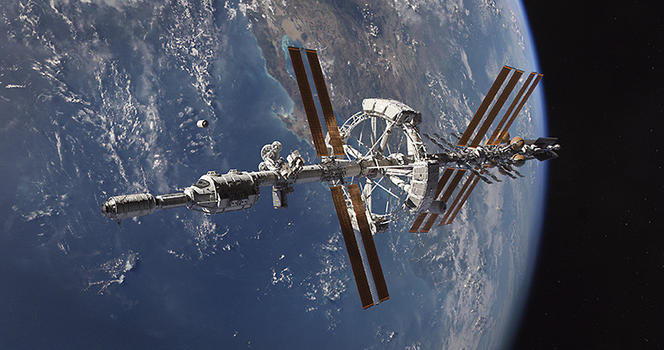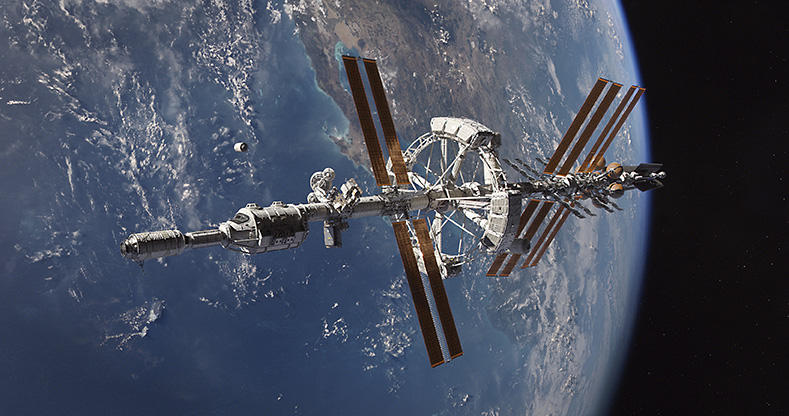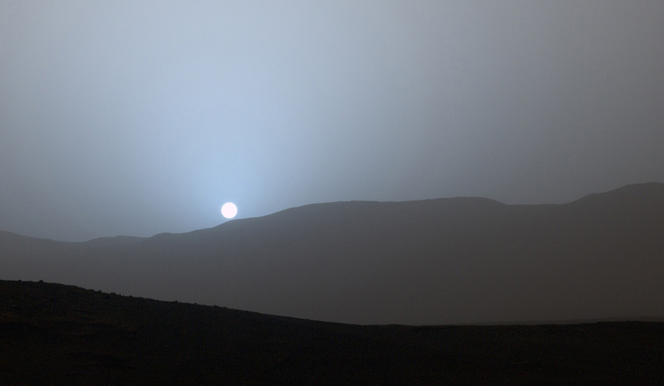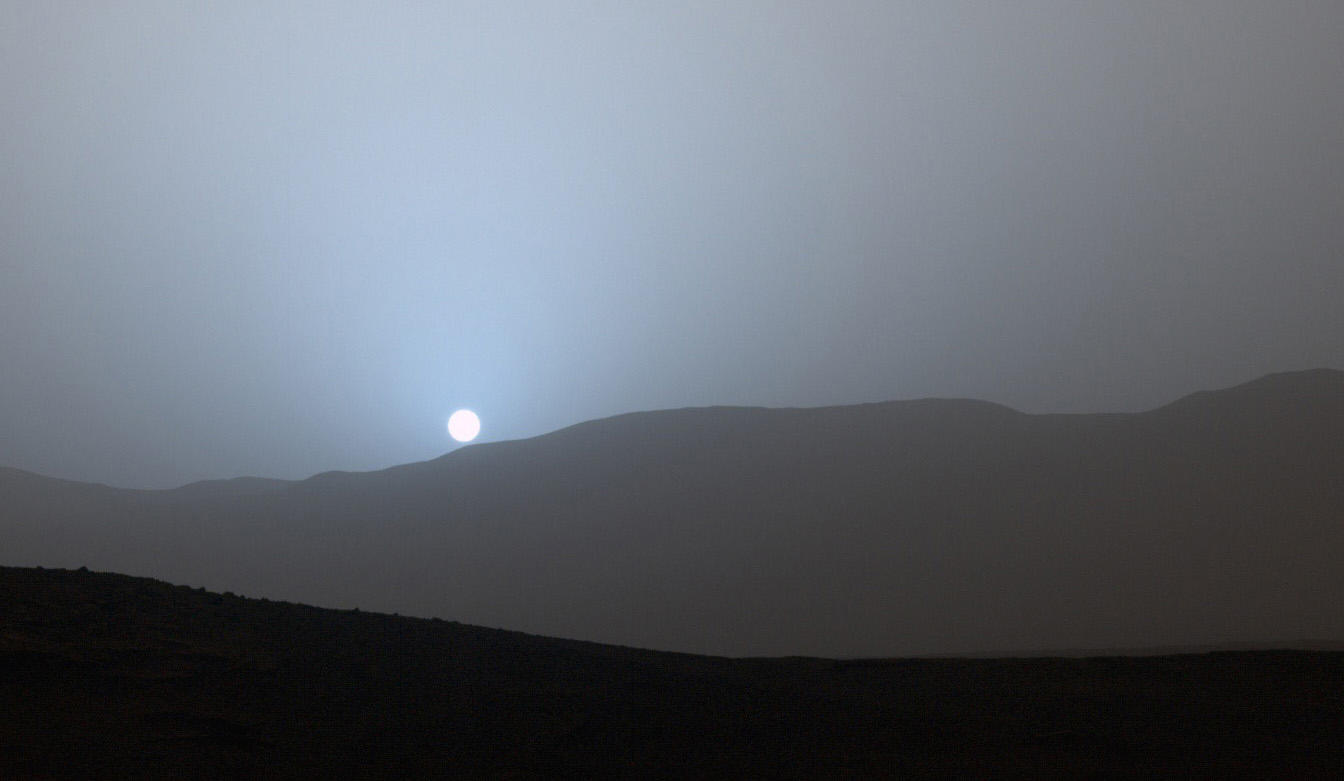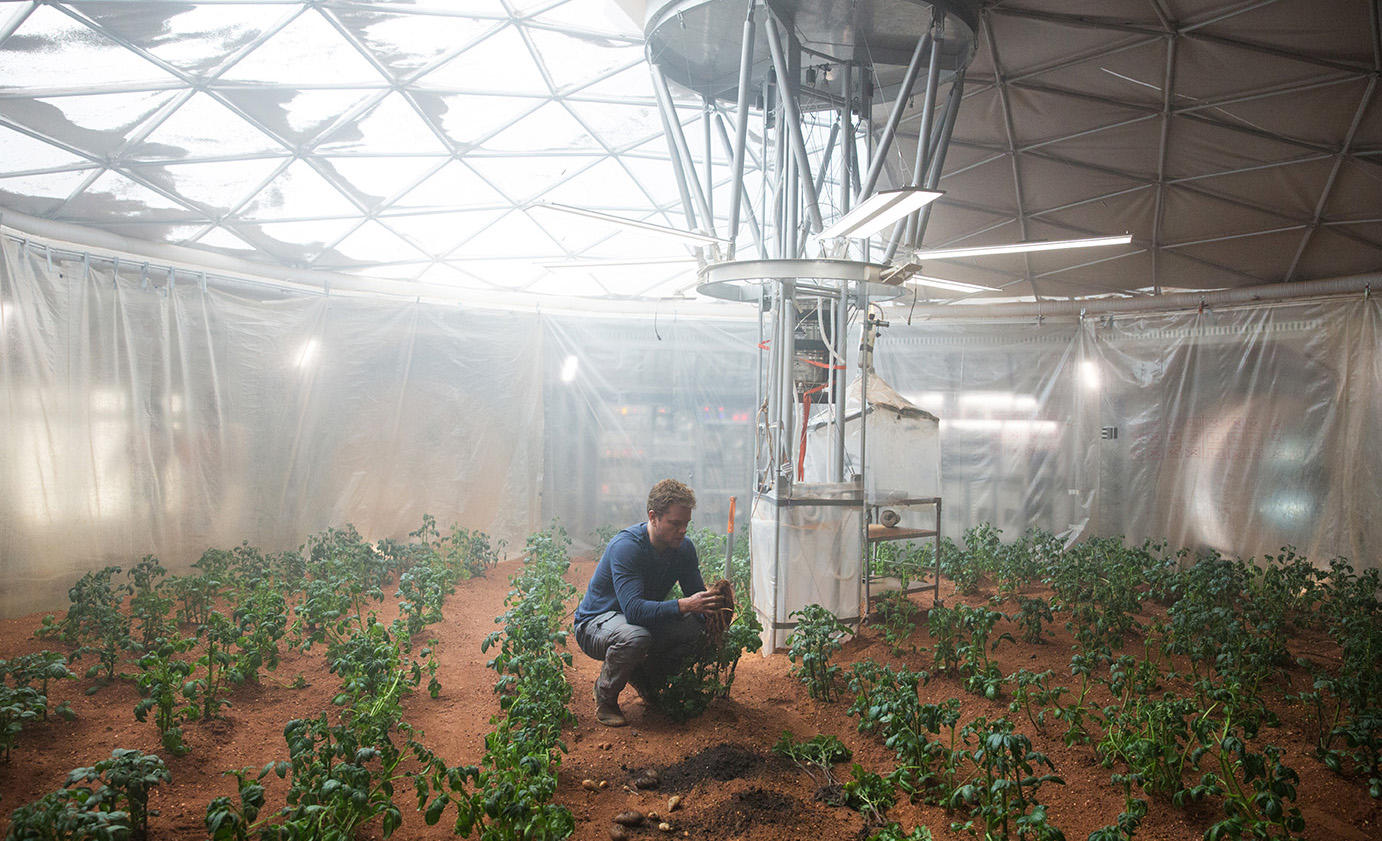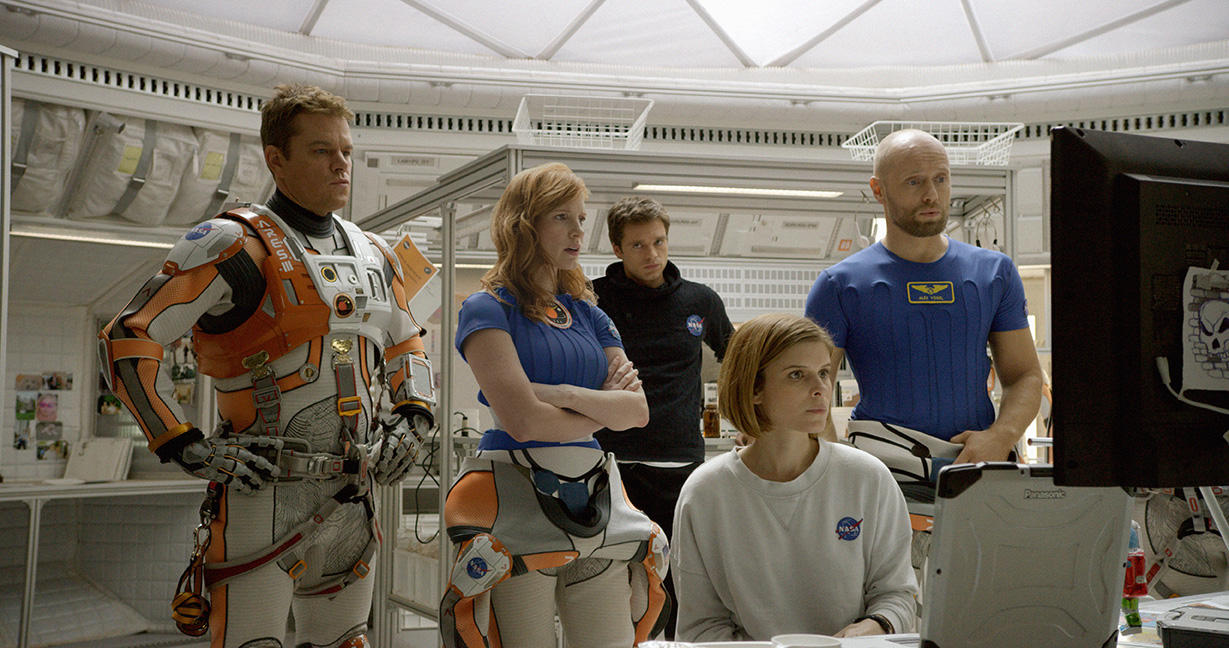You are here
Is Life Stranded on Mars Possible?
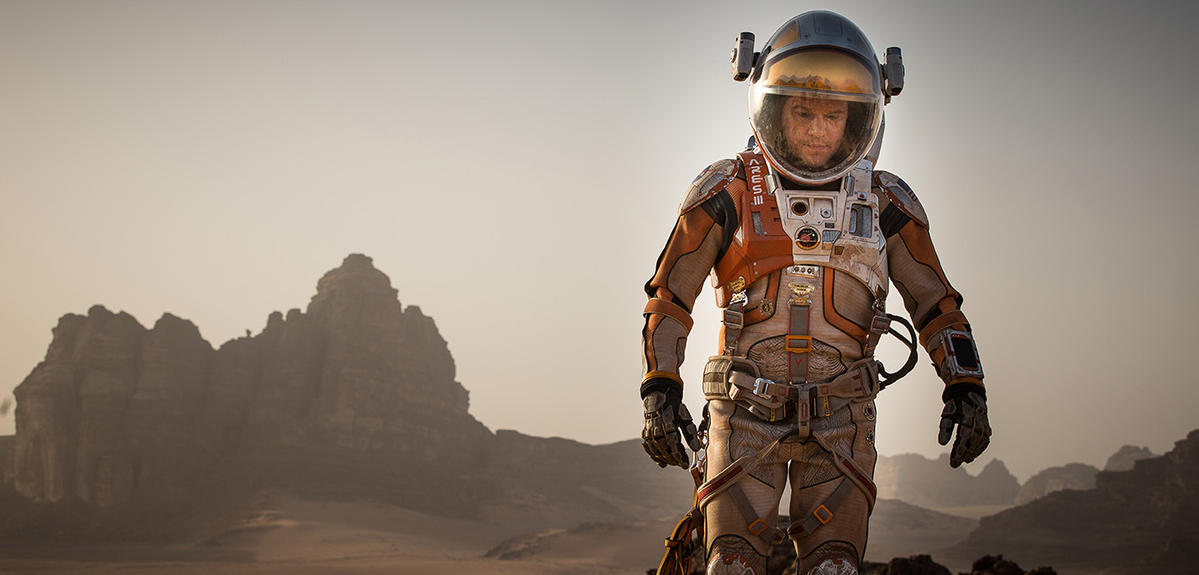
When a hard science fictionFermerA work of science-fiction in which the described technology, discoveries, or evolutions are not in contradiction with the level of scientific knowledge at the time of writing. film is made with consultants from NASA, adapted from a bestseller by a software engineer fascinated with orbital mechanics and dedicated "Martian,"FermerThis is the self-given name of people who are passionate about Mars. They generally belong to the Mars Society, created and presided by the aerospace engineer Robert Zubrin, which promotes human exploration of the Red Planet. it is tempting to look for the incongruities, however few there may be. Several researchers have already derided the violent storm at the beginning of the film that forces the crew to abort their mission, leaving Mark Watney (played by Matt Damon) for dead. While emphasizing the film’s overall realism, planetologist François Forget of the Institut Pierre Simon Laplace's LMD laboratory1 points out other inconsistencies, envisions a less costly Mars expedition, and discusses the psychological issues often raised in connection with a journey to the Red Planet, which would be a much longer mission, both in terms of time and distance, than has ever been attempted with a manned spacecraft.
Would you agree that, apart from a few minor inaccuracies that we will mention later, The Martian is quite convincing?
François Forget: Yes—from the experts at NASA’s Jet Propulsion Laboratory (who have the same first names as their characters in real-life!) to the water recycling system, the continental Martian climate (0 to 20°C during the day and down to –80°C at night in the tropics), and Watney’s ultra-pragmatic attitude, there was a huge effort to make everything realistic. The “Ares” missions in the film are modeled directly after the methods proposed by the aerospace engineer Robert Zubrin and adopted by NASA: a main spacecraft, a pressurized shelter and a MAV (Mars Ascent Vehicle) for leaving the surface and getting back into orbit. The MAV is a key element: too heavy to be shipped to Mars with a full fuel tank, it is delivered ahead of time with a small reserve of hydrogen. It then produces its own fuel in a nuclear-powered chemical plant using carbon dioxide (CO2) from the Martian atmosphere. This goes on for months or years before the astronauts arrive.
Why is the famous storm scene at the beginning of the film so implausible?
F.F.: The Martian atmosphere is so thin (about one hundredth that of Earth) that even a raging storm would be felt by the astronauts as a faint breeze. And the dust particles stirred up would also be very fine, 50 or 100 micronsFermer1 micron, or micrometer is equal to 10-6 meters: 0.000001 meters or 0.001 millimeters. at most. But in the film, the wind whips up gravel!
(spoiler alert)
You also sighed in disbelief when Watney (Matt Damon) comes across Pathfinder, a space probe that landed on Mars on July 4, 1997.
F.F.: In The Martian, the probe is buried in the sand, but it actually takes a very long time for the planet’s light winds to cover anything with dust. For Pathfinder to be buried, a dune would have to drift over it, which is unlikely—unless the story takes place in the distant future and the Martian climate has changed a lot. But that’s not the impression we get from the sets and the equipment seen in the film: a GoPro camera, telephones, computers, etc.
And what is the problem with the majestic mountains in the background of that scene?
F.F.: Mars Pathfinder landed in a perfectly flat valley, Ares Vallis. To land safely it had to have a clearing of 100 by 200 kilometers, so I really don’t see how the mountains shown in the film, picturesque as they might be, could be visible even in the distance. It would have been nice to show the real Pathfinder landing site, which, although flat, is quite beautiful. The crew’s return module is also at the foot of the mountains. I think the film goes a little too far with the scenery: the most common Martian landscape consists of dramatic desert plains sprinkled with a few stones. On the other hand, the Curiosity rover, which doesn’t appear in the film, is currently climbing up a mountain on Mars. The module that delivered it to the Red Planet needed a landing zone only one-tenth the size of Pathfinder’s.
Speaking of the scenery, why were you disappointed with the Martian sunset?
F.F.: Because on that planet it should be blue—every "Martian,"Fermer This is the self-given name of people who are passionate about Mars. They generally belong to the Mars Society, created and presided by the aerospace engineer Robert Zubrin, which promotes human exploration of the Red Planet. knows that! But in The Martian it’s always red, probably to avoid confusing viewers who are used to seeing terrestrial sunsets.
The Hermes spacecraft and its gigantic gravity wheel must have raised a few eyebrows at NASA as well, don’t you think?
F.F.: Yes—that’s a reference to the 1968 film 2001: A Space Odyssey. A ship like that would be way out of reach. It’s just too big! In fact, artificial gravity is being envisaged for long-term missions of this type, but I think it would more likely be in a craft shaped like a double-headed hammer: two modules at either end of a long tube. The whole thing would rotate like a merry-go-round to reproduce the effect of gravity.
What did you think of the shelter that is home to the crew?
F.F.: It was quite well conceived and inflated, as it would have to be under high pressure. This shows when a seal breaks and Watney is suddenly thrown backwards. Such a system is essential because of the planet’s atmospheric pressure: only about 9 millibars in the valleys, compared with 1013 mb at sea level on Earth. Also, the boiling point for water and other aqueous fluids depends on the air pressure: 100°C here, compared with 5°C at most on Mars! An astronaut outside the shelter with no spacesuit would feel his saliva boiling, possibly followed by his own blood. His body would swell up and his organs would fail. Usually, oxygen is the main point of focus because the Martian atmosphere is 95% CO2, but the shelter and spacesuits are also necessary to overcome the crucial problem of air pressure.
(spoiler alert)
Did you find it credible when he tears a hole in his suit to propel himself forward?
F.F.: No—it wouldn’t generate enough force to propel a man who weighs 80 kilos. But the principle is plausible. In fact, it was used in the film Gravity (2013), but at least Sandra Bullock had a fire extinguisher. That was more realistic! And there’s another discrepancy here: since the spacesuits, including the gloves, are inflated like bicycle tyres, Watney should find it much more difficult to handle objects. Unless he has incredibly strong hands…
(spoiler alert)
Is his method for producing water to irrigate his potato patch viable?
F.F.: Yes—he uses hydrazine, the “miracle fuel” for small spacecraft. Hurling it against a metal plate makes it burst into flames. It then breaks down into nitrogen and hydrogen, which Watney burns in the shelter’s oxygen to produce water. But he could also have found ice and melted it with his nuclear reactor. That said, Watney is close to the equator, so he would have had to travel to 25° latitude2 to find any ice, which would be covered by a few centimeters of dust on the slopes facing the poles.
A manned mission to Mars would cost at least 100 to 200 billion dollars and would not be possible until about 2050—provided the program receives massive government backing. Wouldn’t it be better to continue sending robots?
F.F.: It’s a longstanding debate. First of all, in pure scientific terms, sending people to Mars, or into space in general, is not necessarily justifiable. But if society approves and there are qualified volunteers, why not? Secondly, robots are not necessarily more effective than humans. For example, a geologist can spot an interesting rock in a few seconds, but it takes days to do it using an Earth-controlled rover, because a radio signal takes 5 to 22 minutes to travel between the two planets. Yet there is an alternative that I quite like: putting astronauts into orbit around the Red Planet without landing on its surface. It is very difficult, and therefore costly, to land any load of more than a ton on Mars. The atmosphere is too thin to slow the descent with a parachute like on Earth, but too thick to slow down just above the surface using simple retro-rockets, as NASA did for the moon landings. Another advantage is that an orbital mission eliminates the need for the shelter and the MAV return module. From orbit, the astronauts could easily land on the small moons of Mars, Phobos and Deimos (which have nearly no gravity) and, most importantly, send sophisticated robots down to the planet’s surface and control them virtually in real time. Such a mission could take place as early as 2035.
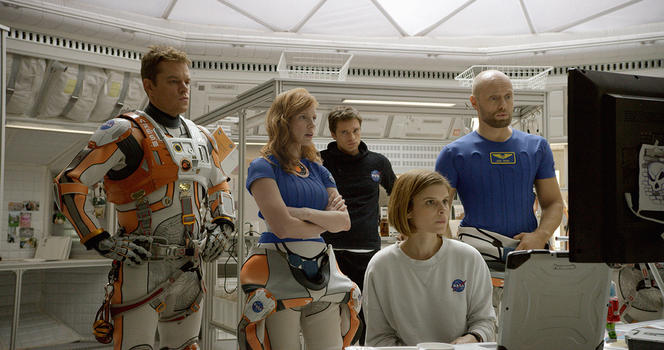
(spoiler alert)
No one seems to doubt the incredible psychological resilience of this Space Age Robinson Crusoe. Alone on the Red Planet, he remains unshakably upbeat and even cheerful all the time, or nearly. Is that the least plausible part of the plot?
F.F.: I’ve seen presentations by NASA psychologists on the risks involved in a Mars mission. There have been studies to determine the best personality profiles, to reduce the risk of stress, depression, and breakdowns. But I don’t think that the psychological factors would be a real hindrance to a journey to Mars. Looking back through history, there have been expeditions under harsher and more terrifying conditions. The polar explorers of the early 20th century, for example, took off with no means of communication at all.
Yes, but those expeditions stayed on Earth. According to the psychologist Dietrich Manzey,3 losing sight of our planet for the six to nine months of the mission could cause psychological disorders, and even mental illness.
F.F.: It is indeed an unprecedented situation, where an emergency return or sending a rescue team would take months or even years, unlike a stay in a space station or on the Moon, which is barely three days from Earth. Communication with engineers on the ground, which helps relieve astronauts’ stress, would also be very difficult, and choppy, with long intervals between questions and answers. I agree more work needs to be done in this area, but I’m not at all receptive to the argument about the Earth being out of sight. On the other hand, when it comes to making life-or-death decisions, there could be dissent and even mutiny. I think those would be the main problems. With carefully selected astronauts, psychological factors should not be an obstacle, in my opinion. Even when things went wrong, the great explorations went on. I do not see how a manned mission to Mars would be so different from the other great expeditions in human history.
I can see at least one difference: the presence of women on the crew. The Hi-Seas isolation simulations in the Hawaiian desert, the second of which was commanded by a woman,4 went smoothly. But a Canadian woman isolated with three men for a simulation in 1999, encountered difficulties.5 Should steps be taken to ensure the group’s compatibility in relation to gender?
F.F.: Indeed, there is much debate on the composition of the crews. From a political point of view, I think that they will have to include women, as in The Martian. For that matter, should only married couples be sent to Mars, as certain studies have suggested? Maybe. The future will tell.
- 1. Laboratoire de Météorologie Dynamique, Institut Pierre-Simon Laplace (CNRS / École Polytechnique / ENS / UPMC).
- 2. http://onlinelibrary.wiley.com/doi/10.1029/2009GL041426/full
- 3. Professor at the Technical University of Berlin, and previously at the German Aerospace Center in Hamburg.
- 4. A simulated Mars mission organized by NASA. Starting in late 2014, three men and three women were isolated for eight months in a small module on the slopes of the Hawaiian volcano Mauna Loa.
- 5. Judith Lapierre filed a complaint for sexual harassment after the SFINCSS-99 (Simulated Flight of International Crew on Space Station) program, in which three men and one woman were isolated for 110 days. (http://jurisprudence.canada.globe24h.com/0/0/federal/cour-federale-du-ca...
Explore more
Author
Science journalist, author of chilren's literature, and collections director for over 15 years, Charline Zeitoun is currently Sections editor at CNRS Lejournal/News. Her subjects of choice revolve around societal issues, especially when they interesect with other scientific disciplines. She was an editor at Science & Vie Junior and Ciel & Espace, then...


